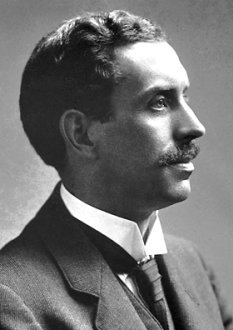A British physicist Charles Glover Barkla earned the Nobel Prize in Physics in 1917 for his groundbreaking research on X-ray scattering. His pioneering experiments and discoveries significantly advanced our understanding of the behavior of X-rays and their interaction with matter, making a profound impact on the field of physics. In this article, we will explore the reasons behind Charles Glover Barkla’s Nobel Prize recognition and the significance of his contributions.

Born on June 7, 1877, in Widnes, England, Charles Glover Barkla began his scientific journey with a focus on the emerging field of X-rays. At the time, X-rays were a subject of great interest and curiosity, and Barkla’s research played a pivotal role in unraveling their properties and behavior.
Barkla’s most significant contribution to the field was his work on X-ray scattering. Through a series of meticulous experiments, he studied the interaction between X-rays and various elements. Barkla observed that when X-rays interacted with matter, they were scattered in different directions, resulting in a phenomenon known as X-ray scattering. His experiments involved measuring the intensity and wavelength distribution of the scattered X-rays, providing valuable insights into the nature of this scattering phenomenon.
One of Barkla’s notable discoveries was the presence of characteristic X-ray radiation emitted when X-rays interacted with different elements. He observed that each element emitted a unique pattern of X-rays with specific energy levels, providing a means to identify and characterize different elements. Barkla’s research on characteristic X-ray radiation contributed to the understanding of atomic structures and paved the way for the development of X-ray spectroscopy techniques.
The significance of Barkla’s research lies in its implications for the field of atomic physics and the broader scientific community. His experiments and discoveries on X-ray scattering provided crucial evidence for the existence of atomic and subatomic structures, confirming the wave-like nature of X-rays and establishing the foundation for future advancements in the understanding of atomic and molecular phenomena.
The Royal Swedish Academy of Sciences recognized the significance of Barkla’s research and awarded him the Nobel Prize in Physics in 1917. The Academy commended his meticulous experiments, which provided essential insights into the nature of X-rays and their interaction with matter. Barkla’s discoveries advanced the field of X-ray spectroscopy and significantly influenced the development of atomic physics.
In conclusion, Charles Glover Barkla was awarded the Nobel Prize in Physics in 1917 for his groundbreaking research on X-ray scattering and the discovery of characteristic X-ray radiation. His meticulous experiments and observations provided valuable insights into the behavior of X-rays and their interaction with matter, advancing our understanding of atomic structures and contributing to the field of atomic physics. Barkla’s discoveries continue to have far-reaching implications, impacting various scientific disciplines and serving as a foundation for further advancements in the field.




